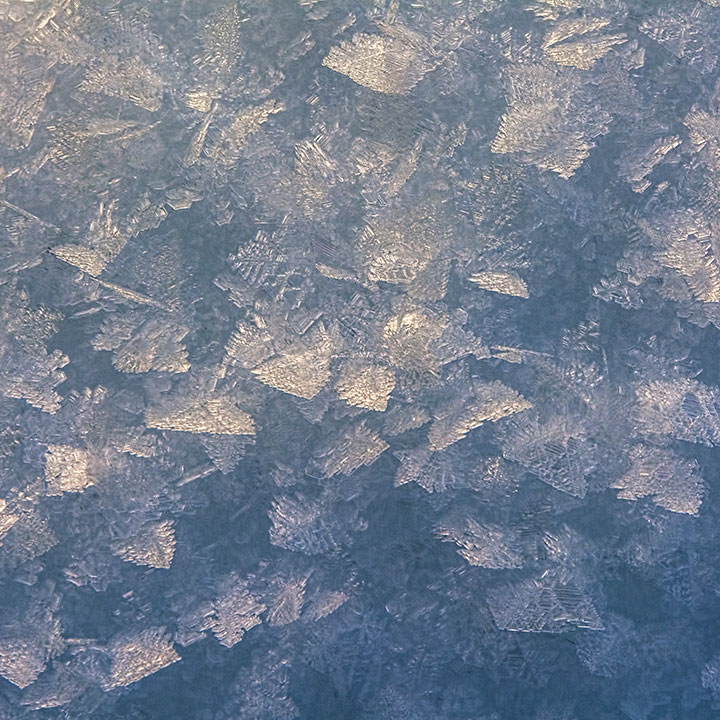I was struck by the extensive and beautiful hoar frost covering a field of soft snow. Yet, the location of the frost was oddly selective: extensive on the snow, absent on adjacent ice and wood. Why might this be?
Hoar This word originally meant old, or venerable, but as older people generally have grey hair, it became an adjective to describe a shade.
All surfaces were equally exposed to the sky and so would have experienced about the same net loss of infrared radiation. They were probably all at about the same temperature. If the water vapour had come from a moist atmosphere, one would expect the resulting frost to have formed similarly on these other surfaces. But, if the air were dry, and the water vapour came from within the snow itself, the pattern makes sense.
The temperature through the depth of the snow was below 0C. However, the coldest snow was at the surface where there had been a net loss of infrared radiation. At warmer depths, evaporation of snow produced water vapour that then diffused upwards to the colder surface. Here it condensed to form the beautiful crystals. Hoar frost formed on a snow surface in this way is called surface hoar.
Surface hoar has formed on a field of snow as a result of water vapour that diffused upwards through the snow pack. Here, the delicate crystals are lit by yellowish winter sunlight; the shadows are exposed to bluish skylight.

Surface hoar on snow? The answer is simple; you need an already existing snow crystal to let the moisture to increase the size of it. The moisture is coming from the ambiant air and from within the snow, by evaporation. The ice is not providing that same structure and wood is not a crystal. Here is a more scientific paper: http://www.ucalgary.ca/asarc/files/asarc/Issw2012_SurfaceHoarModelling_Horton.pdf
Bernard, Nice paper find. However, I don’t believe the issue is as simple as you suggest. Frost readily forms on those other surfaces if the temperature is low enough and the water vapour comes from the atmosphere. Each surface provides good ice nucleation. Certainly atmospheric water vapour can also contribute to surface hoar, but in this case, the source appears to have been almost entirely from within the snow pack.